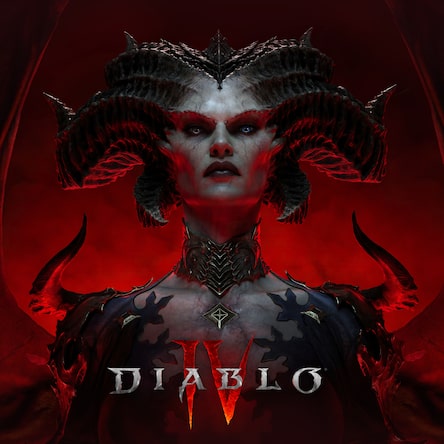Select Games to Compare
Hogwarts Legacy vs Diablo IV
| close | close |
|---|---|
| shopping_cart Where to Buy | |
| info General Info | |
| Developer | |
| Avalanche Software | Blizzard Entertainment (Team 3) |
| Publisher | |
| Warner Bros. Games (under Portkey Games label) | Blizzard Entertainment |
| Genre | |
| Action RPG, Open World, Fantasy, Third-Person | Action RPG, Hack and Slash, Dungeon Crawler, Open World (elements), Dark Fantasy |
| Release Date | |
| 2023-02-10 | 2023-06-06 |
| star Key Features | |
| Key Specs | |
|
|
| Rating | |
| Teen | Mature 17+ |
| Star Rating | |
| 4.30 | 4.00 |
| sports_esports Gameplay | |
| Gameplay Overview | |
| No major story expansions have been released or announced as of mid-2024. Post-launch support has primarily consisted of patches, quality-of-life updates (like Arachnophobia mode), and making previously platform-exclusive content available to all players. Some cosmetic DLC items were available via pre-orders or deluxe editions. | Diablo IV follows a seasonal live-service model. Each season (typically lasting around 3 months) introduces new gameplay mechanics, questlines, a seasonal journey with objectives, a battle pass (free and premium tracks with cosmetic rewards and season boosts), new legendary aspects, unique items, and balance changes. The first major paid expansion, 'Vessel of Hatred,' is announced for late 2024, featuring a new region, class, and story continuation. |
| Themes List | |
| No major story expansions have been released or announced as of mid-2024. Post-launch support has primarily consisted of patches, quality-of-life updates (like Arachnophobia mode), and making previously platform-exclusive content available to all players. Some cosmetic DLC items were available via pre-orders or deluxe editions. | Diablo IV follows a seasonal live-service model. Each season (typically lasting around 3 months) introduces new gameplay mechanics, questlines, a seasonal journey with objectives, a battle pass (free and premium tracks with cosmetic rewards and season boosts), new legendary aspects, unique items, and balance changes. The first major paid expansion, 'Vessel of Hatred,' is announced for late 2024, featuring a new region, class, and story continuation. |
| settings_applications System Requirements | |
| 720p - 720p_30FPS_Low - Minimum (720p ~30 FPS, Low Preset, Upscaling Performance) | |
CPU: Intel Core i5-6600 (3.3GHz) or AMD Ryzen 5 1400 (3.2GHz) GPU: NVIDIA GeForce GTX 960 (4GB) or AMD Radeon RX 470 (4GB) RAM: 16 GB | — |
| 1080p - 1080p_60FPS_High - Recommended (1080p ~60 FPS, High Preset, Upscaling Quality/Balanced possibly) | |
CPU: Intel Core i7-8700 (3.2GHz) or AMD Ryzen 5 3600 (3.6 GHz) GPU: NVIDIA GeForce GTX 1080 Ti (11GB) / RTX 2070 (8GB) or AMD Radeon RX 5700 XT (8GB) / RX 6700 XT (12GB) RAM: 16 GB | — |
| 1080p - Minimum_Specs_1080p_30FPS_Low - Minimum (1080p native / 720p render resolution, ~30 FPS, Low Preset) | |
| — | CPU: Intel Core i5-2500K or AMD FX-8350 GPU: NVIDIA GeForce GTX 660 or AMD Radeon R9 280 RAM: 8 GB (16GB Recommended) |
| 1080p - Medium_Specs_1080p_60FPS_Medium - Medium (1080p native, ~60 FPS, Medium Preset) | |
| — | CPU: Intel Core i5-4670K or AMD Ryzen 3 1300X GPU: NVIDIA GeForce GTX 970 or AMD Radeon RX 470 RAM: 16 GB |
| 1080p - High_Specs_1080p_60FPS_High - High (1080p ~60 FPS, High Preset) | |
| — | CPU: Intel Core i7-8700K or AMD Ryzen 7 2700X GPU: NVIDIA GeForce RTX 2060 or AMD Radeon RX 5700 XT RAM: 16 GB |
| 1440p - 1440p_60FPS_Ultra_No_RT - Ultra (1440p ~60 FPS, Ultra Preset, No Ray Tracing, Upscaling Quality/Balanced) | |
CPU: Intel Core i7-10700K (3.8GHz) or AMD Ryzen 7 5800X (3.8GHz) GPU: NVIDIA GeForce RTX 2080 Ti (11GB) / RTX 3080 (10GB) or AMD Radeon RX 6800 XT (16GB) RAM: 16 GB (32GB Recommended) | — |
| 4k - 4K_60FPS_Ultra_With_RT_And_Upscaling - Ultra RT (2160p/4K ~60 FPS, Ultra Preset, RT On, Upscaling Performance/Ultra Performance + Frame Gen) | |
CPU: Intel Core i9-12900K or AMD Ryzen 9 5900X/7900X GPU: NVIDIA GeForce RTX 4080 (16GB) or AMD Radeon RX 7900 XTX (24GB) RAM: 32 GB | — |
| 4k - Ultra_Specs_4K_60FPS_Ultra - Ultra (2160p/4K ~60 FPS, Ultra Preset, Upscaling likely needed) | |
| — | CPU: Intel Core i9-9900K or AMD Ryzen 7 3700X GPU: NVIDIA GeForce RTX 3080 or AMD Radeon RX 6800 XT RAM: 32 GB |
| Other - DirectXRequirement | |
CPU: — GPU: — RAM: — | CPU: — GPU: — RAM: — |
| Other - LaptopConsiderations | |
CPU: — GPU: — RAM: — | CPU: — GPU: — RAM: — |
| Other - OptimizationNote | |
CPU: — GPU: — RAM: — | CPU: — GPU: — RAM: — |
laptop_chromebook Laptop Recommendations
Common Recommendations (Handles All Compared Games)
For Hogwarts Legacy Specifically
For Diablo IV Specifically
info_outline Laptop recommendations are estimates based on available component benchmarks and game requirements. Actual performance may vary depending on settings, drivers, cooling, power limits, etc. Prices and availability subject to change. As an Amazon Associate, we earn from qualifying purchases.
































